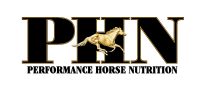IN HORSES
FOOD ALLERGIES
December 2015

Written by Performance Horse Nutrition
With what seems to be a rise in food allergies in humans we find ourselves asking does my horse have a food allergy. In this article we will discuss what a food allergy is and how can we determine if our horse suffers from one and finally what we can do about the problem. Before we start it must be stated that true food allergies are difficult to diagnosis and not common in the horse.
So what is a food allergy?
The terminology itself is confusing. The term food allergy implies an immunologic reaction to an ingested substance. Not all food allergies are truly allergic in nature. A better term for the condition would be “adverse reactions to food”. Therefore, for the sake of simplicity, most people use the term food allergy to indicate adverse reactions to food. Symptoms can be gastrointestinal, dermatologic, or both. Diet items reported to cause adverse food reactions in horses include lucerne, barley, beet pulp, bran, buckwheat, chicory, clover, malt, oats, potatoes, St. John’s Wort, and wheat, feed additives.
How will I know if my horse has a food allergy?
Signs of food allergy are extremely variable both in the horse and other species. Food allergies usually cause severe itching, but non itchy hives have also been reported. Other signs of adverse food reactions include regional swelling, secondary lesions from itching, skin redness, scaly skin and hair loss. Gastrointestinal symptoms such as diarrhea may also be present. Since the clinical signs of a food allergy are not unique, other dermatologic diseases must be eliminated from the differential diagnosis list before the diagnosis of food allergy is made.
Various mites can cause a typically non-seasonal skin itching. A fungal infection, and bacteria, can cause severe, itching that can look identical to a food allergy. Food allergy must also be differentiated from other allergic diseases such as insect bite allergy, contact allergy, and aversion to inhaled contaminants. A contact allergic reaction almost always produces bumps on the horses’ skin ranging in size. The eruption of bumps may be seasonal (if plant related) or non-seasonal (topical medications, shampoos, tack cleaners). The distribution of lesions can often give clues to the presence of a contact reaction. Insect bite allergy such as Culicoides hypersensitivity typically results in a severely itchy hives and is most often seasonal. Inhalant allergic reactions can be seasonal or non-seasonal, depending on geographic location.
What should I do if I suspect a food allergy?
Obtaining a good history, while sometimes difficult, is crucial for the diagnosis and management of food allergy. The person who is responsible for the day-to-day care, feeding, and grooming of the horse must be interviewed. This is not necessarily the owner of the horse. Important historical information to ascertain includes the horse’s age at onset, time of year of onset of condition, seasonality, environmental conditions, and changes in environment and their effect on symptoms. Gather as much information as possible about the horse’s past and current diet. Commercial feeds, hay types, pasture, treats, and supplements/additives must be recorded. It is also important to note if the horse’s diet is consistent throughout the year. Other information that should be obtained includes previous treatments and response (if any), current treatment and response, insect control measures, intestinal parasite control measures, and any other current/past illnesses. Food allergies can start at any age and symptoms are usually non-seasonal and do not vary with changes in environment (provided the diet is not changed).
How will I know what my horse is allergic to?
The only reliable way to confirm a diagnosis of food allergy is with an elimination diet. Both intradermal allergen testing and serum testing have been shown to be unreliable for identifying food allergies. These diagnostic tests have been investigated in other species, and were found to produce an unacceptable number of false positives and false negatives. Some of the pollens on an intradermal testing panel are from grasses that are used for hay. A positive reaction on an intradermal test does not mean this grass is a food allergen for this individual. However, most hay will contain pollen from the grass, as well as a variety of other pollens, dust, etc. For this reason, a change in the type of hay being fed may be recommended. At the very least, the hay should be fed on the ground and lightly misted with water to minimize dust and pollen being inhaled.
A good elimination diet will consist of hay (perhaps a different species) and a low intake vitamin and mineral pellet. All other feeds and supplements should be discontinued for the course of the trial. The food trial should be continued for 8 to 12 weeks to see maximal improvement. Most food allergic individuals show improvement in clinical signs in 4 to 6 weeks. If clinical improvement is noted, the horse can be challenged with items from its previous diet. One new item should be introduced every week. This allows the offending diet items to be identified.
How do I manage a horse with a food allergy?
The only effective treatment for food allergies is avoidance of the offending allergen. Antihistamines and glucocorticoid therapy can be tried, but are not particularly effective. Providing horses with clean, dust free hay and a low intake vitamin mineral is the basis for the new feeding program – from there add calories from single ingredients that have not shown to elicit an allergic reaction in the horse such as vegetable oil or oats.
-Dr. Tania Cubitt
[print-me]

